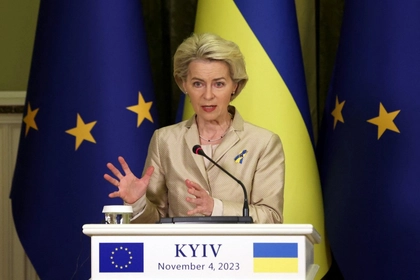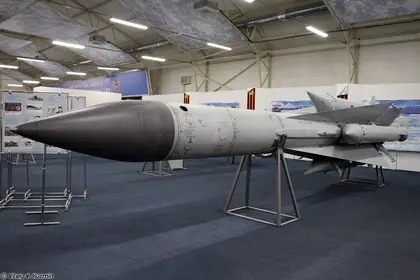Russia seems to be managing to avoid many Western-imposed sanctions and export controls, allowing its assessed missile production to now exceed pre-war levels, according to a number of US, European, and Ukrainian officials, cited in a New York Times report.
Since Russia's full-scale invasion of Ukraine in February 2022, Ukraine's Western allies have had a two-pronged strategy for helping Ukraine. Namely, providing aid, and sanctioning Russia.
On Sept. 7, on a visit to Kyiv, US diplomat Antony Blinken announced another $1 billion to be added to the approximately $40 billion the US has given Ukraine since the beginning of Russia's full-scale invasion.
The West's other strategy has been to cripple Russia's war machine through sanctions.
Indeed, on Wednesday, Sept. 13, Russian President Vladimir Putin met with his North Korean counterpart, Kim Jong Un, in a move that the US has characterized as a desperate attempt to gain new weapons.
However, according to the NY Times article, while Russia may be burning through more ammunition than it makes at the moment, the Russian war machine is not only up and running, it's producing more weaponry than it did before its full-scale invasion.
Part of this is done by converting large parts of its domestic economy to war purposes.
For example, over the summer, the chief designer of Russia's deadly Lancet kamikaze drone, Aleksandr Zakharov, told Russian television that his company had purchased and converted an unused shopping mall in Izhevsk to house new drone production facilities.

EU Transfers €1.5 Bln Raised From Russian Assets for Ukraine
Despite initial success, by the end of 2022, Moscow's military production had regained its momentum, as revealed by anonymous US officials cited in the NY Times article.
Russia avoids US and European export controls meant to stop it from getting the parts it needs for its weapons by utilizing its intelligence services and defense ministry to run illicit networks that smuggle essential components via more Moscow-friendly countries.
US authorities have said that they have some ability to impede Russia's efforts to acquire the necessary components for missile production, but have admitted that complete prevention is unlikely.
On Aug. 31, the Commerce Department leveled accusations against three individuals involved in the Russian procurement network, the NY Times article reported.
One, Arthur Petrov, who holds dual Russian-German citizenship was arrested and faces charges of export control violations brought against him by the US Justice Department.
Petrov was accused of procuring microelectronics from American-based suppliers and exporting them to destinations like Cyprus, Latvia, and Tajikistan.
Collaborating companies in these locations then arranged onward shipment of the components which ultimately reached their final destination in Russia.
“It makes our job harder because there are a lot of countries that it’s legal and totally fine [for US companies] to sell those chips for legitimate commercial purposes,” Matthew S. Axelrod, the Commerce Department assistant secretary for export enforcement told the NY Times. “The problem is when those chips then get diverted and shipped to Russia.”
Some positive developments have included American banks now alerting the US government to hundreds of suspicious transactions and making efforts to develop a warning system with their European partners.
The apparent resurgence of Russia's military production is cause for significant concern among Ukrainians.
Moscow has a history of using artillery to target Ukrainian troops on the front lines, launching missiles to disrupt essential infrastructure such as the electricity grid, and instilling fear among civilians in urban areas.
Over the winter, Russian attacks on Ukraine's energy grid caused millions of Ukrainians in more than a dozen provinces to experience severe power disruptions just when temperatures were plunging.
The expansion of Russian missile stockpiles this time around could result in more of the same this coming winter.
To counter this threat, the Pentagon is working on enhancing Ukraine's ability to intercept Russian missiles and drones targeting both civilians in cities and military objects throughout the country.
“Ukrainians have become better in defending their infrastructure and building defenses around their power stations and critical power grids,” Kusti Salm, a senior Estonian defense ministry official told the NY Times.
However Ukraine does not have enough air defense systems to cover the entire country and must select what sites to prioritize the defense of. Ukrainian officials cited in the report said that an increased barrage of missiles could overwhelm the country’s air defenses.
Although Russia has increased military production, it still struggles to keep pace with the current consumption rates of its military forces and faces shortages in rocket propellant and basic explosives which are more difficult to smuggle and may help limit further production.
You can also highlight the text and press Ctrl + Enter






